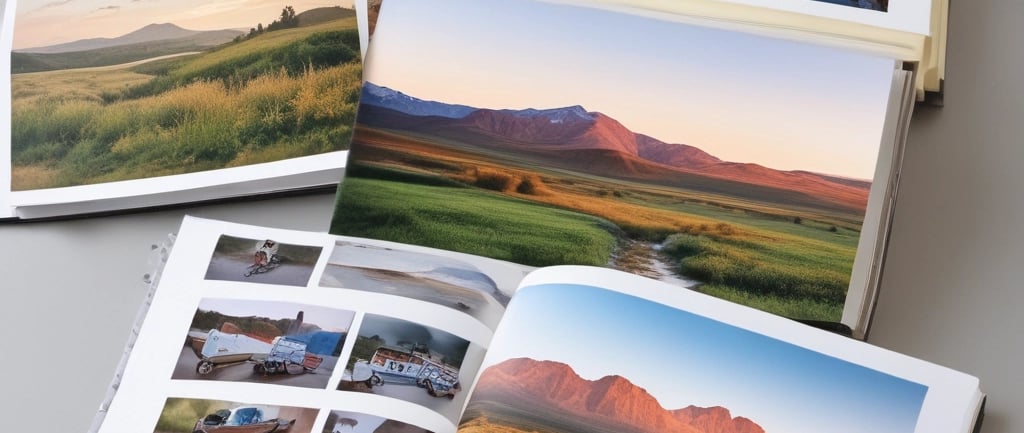Turning Memories Into Treasures: DIY Photo Books and Travel Journals
Create timeless keepsakes from your travels with a simple, evergreen approach to DIY photo books and travel journals—covering story structure, smart curation, classic layouts, and captions that bring every moment back to life.
AFTER THE TRIPNEW


There is a special kind of magic in holding a story you lived with your own hands. Trips come and go, phones fill with images, and details blur into a handful of favorite moments. A thoughtfully made photo book or travel journal turns scattered memories into a narrative you will revisit for years. It is not about perfect shots or elaborate layouts. It is about telling the truth of a journey in words and images that still feel alive when you open the pages a decade from now.
Choosing a Format That Fits Your Life
Start by deciding how you want to experience your memories in the future. A printed photo book offers clean, modern layouts and the satisfaction of a finished object that sits proudly on a shelf. A travel journal invites you to write as you go, capturing small details that photos can miss: the sound of rain on a tin roof, the scent of cardamom in the market, a sentence overheard on a tram. Many travelers find a hybrid approach works best. Keep simple notes during the trip, then translate them into a polished book when you return, blending the immediacy of on‑the‑road impressions with the clarity that comes from looking back.
Building a Story Framework
Every lasting keepsake starts with a structure. Think of your project like a short book with a beginning, middle, and end. Open with a title page and a line or two about why you went. Organize the core of the story by place, day, or theme, and let each section revolve around a few meaningful moments rather than an exhaustive timeline. Close with reflections, favorite finds, and what you would love to do next time. A gentle framework prevents overwhelm and helps the project remain evergreen, whether you are documenting a weekend escape or a long journey.
Capturing Images You Will Actually Use
While you travel, aim for variety that reads well on a page. Wide images set the scene. Medium shots ground the reader in a moment. Close‑ups reveal textures and small details that convey atmosphere better than words. Mix candid images of people with quiet stills—a breakfast table, a train window, a street corner at dusk. Natural light, steady horizons, and a breath of space around the subject will age better than heavy filters or trendy effects. You are not trying to impress an algorithm. You are building a book your future self will love.
Editing With Care and Intention
Curation is where your project becomes a treasure. Instead of saving every image, choose the ones that carry feeling. Aim for a tight selection in each section that includes highlights, context, and small details. Remove near‑duplicates and anything that interrupts the pace. Give every image a reason to be there. When in doubt, ask whether a photo adds clarity, emotion, or movement to the story. If it does not, let it go. The quieter the selection, the stronger the book.
Designing Pages That Age Well
Timeless design is simple, consistent, and breathable. Limit yourself to one or two fonts and keep captions easy to read. Balance full‑bleed photos with pages that include generous white space. Repeat a handful of layouts throughout the book so it feels cohesive instead of busy. Include subtle anchors—a small map, a date stamp, a thin timeline bar—that help the reader understand where they are in the journey. If you are handwriting in a journal, choose smooth paper, a pen you enjoy, and clear headers for dates and locations. Consistency is what makes the whole feel intentional.
Writing Captions That Bring Photos to Life
A few strong sentences are enough to unlock a memory. Focus on what surprised you, what happened right before or after the image, and the small sensory details that are easy to forget. Present tense can create immediacy without adding many words. The goal is not to explain everything. It is to give just enough context for the image to breathe. Future you will thank present you for writing down names, neighborhoods, songs that were playing, and the exact phrase a stranger used that made everyone laugh.
Adding Meaningful Artifacts
Tiny physical or scanned extras turn pages into a lived‑in record. Tickets, stamps, café receipts, hand‑drawn arrows on a map, a child’s sketch of a fountain—all of these offer texture and time. If you prefer a minimal look, gather them at the back in a clean “Collected Bits” section or create a single collage spread for each chapter. The right few artifacts say more than a crowded scrapbook ever could.
Creating a Workflow You Can Finish
Evergreen projects are built on habits that scale. On the road, end each day by selecting a handful of favorite photos and jotting a few lines of notes. When you return, create one “keepers” folder and sort images into your story sections. Design a couple of sections per week so the project moves forward without taking over your life. Set a clear finishing line—ordering a printed copy by a one‑month mark or binding your journal by a specific date—so your memories do not sit in a file forever.
Printing, Binding, and Digital Sharing
If you are ordering a photo book, choose sturdy paper, a matte or lustre finish that handles fingerprints well, and lay‑flat binding for panoramic spreads. If you are going fully DIY, print photos at a trusted lab and place them with photo corners or adhesive sleeves in a high‑quality notebook. For digital albums, export a tidy PDF, name files clearly, and keep a copy in the cloud and on an external drive. Always preview for crop, color, and typos, and consider a small test print if you are trying a new service.
Making It a Shared Tradition
Memory keeping becomes richer when everyone participates. Invite travel companions to contribute a quote, a favorite moment, or a short reflection. Give kids a page to fill themselves. For multi‑generational trips, include a simple Q&A spread that captures perspectives across ages. Over the years, these repeating pages become a thread that connects different journeys into one family story.
Preserving and Revisiting
Store printed books away from direct sunlight and keep journals somewhere you will see and use them. Set a recurring reminder to pull a book off the shelf each month and spend ten quiet minutes with it. Revisiting strengthens the habit and reminds you why you made the effort in the first place. A good book does more than document what happened. It helps you feel it again, and it invites the next adventure.
The Evergreen Takeaway
A photo book or travel journal becomes a treasure when it is honest, simple, and thoughtfully finished. Choose a format that suits your life, shape a clear story, curate with feeling, and design with time in mind. Years from now, you will open the cover and find not just images and ink, but the sound of a street at evening, the warmth of a shared meal, the curve of a coastline at dawn. That is the promise of memory turned into something you can hold.
